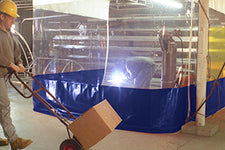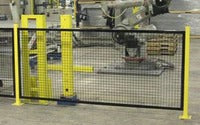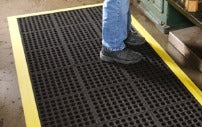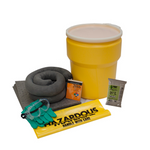https://pixabay.com/photos/building-construction-site-cranes-768815/
When the winter months turn harsh, many businesses prepare to take a well-deserved break. In most areas, however, the construction industry doesn’t have that luxury. These brave workers have to plod on. But that’s possible only not if they’re able to take safety precautions.
The cold weather brings with it gale-force winds, low temperatures, and fewer hours of natural light. All of these factors mean that you should prepare your construction site accordingly to make it still functional. Below are some tips for doing this, along with certain products to keep in stock:
Act before the cold strikes
https://pixabay.com/photos/architecture-blueprint-floor-plan-1857175/
If you want to prepare that site in time, it’s best to start early. Start the maintenance before the cold even hits your area.
The first step is to look at the planned construction for these cold months. You’ll probably have to consider items such as concrete curing blankets, sediment filters, and a silt fence to preserve your site. If there are any structures on the construction site, you’ll need to secure these as well. Any fencing and ladders should be covered up as soon as possible.
Have protection against fallen snow
Ever thought about what will happen if there’s a fresh snowfall during the night? Fortunately, there are now snow removal tarps available that can help you turn hours of shoveling into a quick removal process.
Snow removal tarps or construction snow tarps are for lifting and removing snow from your construction site. If you fear snowfall in night or during a holiday, invest in some of these tarps and cover up your construction site with them. This way, the freshly fallen snow can be removed safely when it's time to resume work. This precaution reduces labor costs, limits downtime, and increases the overall productivity of your job site.
Think ahead
If snow falls, it will also eventually melt at some point. The dry soil on your construction site is likely to become wet and muddy after the snow thaws. So, be ready for dealing with that mess.
One way of minimizing this issue is by using hay tarps. While they’re generally used for covering and protecting stored hay on farms, hay tarps could also be handy on a construction site. They can withstand harsh weather and prevent the site from getting affected by the elements.
Other precautions include barriers that increase your surface stabilization. These will control the soil and stop it from moving about too much.
Ensure the integrity of construction site material
When the temperatures drop drastically, you also have to worry about the materials on your construction site. These are usually heat sensitive. That’s when you should have some sort of tarp or blanket for them. Cement, for instance, shouldn’t be in freezing temperatures for about a day after pouring or placing.
If you have fresh cement or some other sensitive material on your site, consider getting some concrete curing tarps.
Concrete curing tarps or blankets are utilized when you're drying concrete, especially when you're in a cold climate. They can also protect construction sites in wet weather, as they help the concrete to dry evenly. When it’s cold, these tarps will provide the necessary insulation and keep your construction materials safe.
Cover loose materials
Construction sites usually have a wide range of materials on them. These include gravel, sludge, stones, construction debris, sand, and so on. Snowfalls, winds, and showers could ruin these materials if you don't take the necessary precautions.
If you have a lot of loose materials on your site, consider investing in a general refuse tarp. This will cover up the materials and keep them from rolling about or getting affected by the specific phenomenon that winter brings along.
Safeguard the pipes
The pipes that provide water to your construction site can easily freeze during the winter. You can hardly afford that. Not only will you be unable to get water for your construction needs but the pipes will expand and even burst.
Instead of paying a huge repair and replacement bill, it’s wise to cover your tracks by insulating your plumbing system. You can get this insulation with a polythene or fiberglass system.
Install temporary walkways
Besides insulating and covering up your materials, it’s also important to organize a construction site for the winter. Having a temporary walkway and roads will help to maintain the operations of the site and also keep everyone safe during these months.
Most construction sites have heavy loads passing within them during the day. You have to transport heavy machinery, construction materials, debris, and so on. This might not be so easy during the harsh winter. So, think about setting up temporary paths beforehand. Make sure that every building has a clear access point to these paths. Overall, this step will hopefully keep your construction operations safe, clean, and as quick as possible.
Use salt and grit
If your footpaths and roads are affected by freezing temperatures, it’s a good idea to apply some salt and grit to them almost every day. This will help to clear up the snow and prevent the formation of frost. It will also prevent other safety hazards from cropping up.
Implement safety with heat sources
With the temperatures dropping, heat sources such as portable heaters might be necessary on your construction site. However, all of these need careful inspections and testing before everyday use. If you get a faulty heater on a construction site, the fumes and chemicals might make a highly dangerous situation.
Finally, allot certain safe areas for placing the heaters. These should always be on fire-resistant surfaces and in a well-ventilated area.
Other safety precautions
A construction site will have several areas that could be risky for workers, supervisors, etc. You might need to get some safety netting for these places, especially when the colder months are imminent.
When you have strong winds coming in, safety netting in high areas like roofs is a must. This will ensure that your workers and other employees stay safe while on the job.
The takeaway
Preserving and protecting your construction site during the winter might be intimidating at first. The steps above will start you off well. But there will be several additional considerations according to your specific situation.
Go around your construction site a few times and make a checklist of what you need to do before the cold sets in. You may want to cross-check the list with some of your peers as well as those employed under you. Be thorough in your preparations. That way, you’ll stay safe and productive even in uncooperative weather.




























